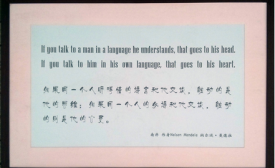china
People around the world see China as "confident", "belligerent" and "arrogant", state-run media says, in an unusually direct survey of attitudes towards the country. Only 13 per cent of respondents in the poll by the Global Times newspaper described China as "peaceful", a sign that Beijing's territorial spats with its Asian neighbours have taken a toll on its image.
There is a submerged rock in the Yellow Sea that seafaring Korean families once believed to be the home of the spirits of dead fishermen. The rock’s name in English is Socotra Rock; in Korea, it’s referred to as Ieodo, and in China the Suyan Rock. Whatever the language, it’s at the center of a new global hot zone that is threatening to destabilize relations in East Asia.
Asia’s emerging markets remain on edge over the U.S. Federal Reserve’s actions, damaging investor confidence from India to Indonesia. However, a new survey by the World Bank suggests that foreign direct investment (FDI) flows won’t be drying up anytime soon. In its World Investment and Political Risk 2013 report released Thursday, the World Bank’s Multilateral Investment Guarantee Agency (MIGA) said macroeconomic instability and political risk ranked “neck and neck” as the top concerns for investors over the short and medium terms.
On the sad occasion of Nelson Mandela’s death, it’s worth recalling his words on languages: “If you talk to a man in a language he understands, that goes to his head. If you talk to him in his own language, that goes to his heart.” I read that quote on a poster on the wall at the Beijing Language and Cultural University on a smoggy morning this September – BLCU is one of the British Council’s longest standing and biggest partners in China.
Public diplomacy (PD), if defined as the act of a government engaging directly with a foreign public, then many governments are currently conducting PD towards the Filipino public in the aftermath of Typhoon Haiyan's devastation. Most public diplomacy scholars and practitioners refer to the foreign aid assistance in the wake of a disaster as "aid diplomacy."

On the sad occasion of Nelson Mandela’s death, it’s worth recalling his words on languages: “If you talk to a man in a language he understands, that goes to his head. If you talk to him in his own language, that goes to his heart.”
“We’ve spent decades making their toys, their shoes, and even their flags,” a deep voice intones in Mandarin as US military tanks trundle across a desert. ”All the while, enduring their condescension and biding our time…finally the moment has come; now they will know our greatness.” A group of American soldiers looks up at the sky that suddenly fills with screaming jets, missiles, explosions, fire and fumes.







